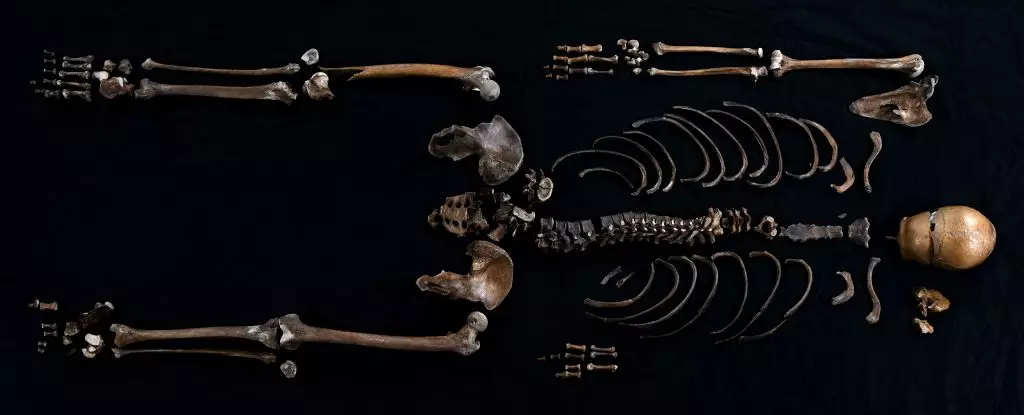The Viking Age, a period traditionally marked by exploration and conquest, holds many tales interwoven with both legendary heroes and grim realities. Among these narratives, the Norse Sverris Saga serves as a crucial historical document, detailing the life of King Sverre Sigurdsson, who ruled Norway from 1184 until his demise in 1202 CE. Recent anthropological research has shed new light on a seemingly incidental yet pivotal narrative within this saga—the story of a nameless corpse, referred to as the “Well Man.” This intriguing turn has expanded our understanding of not only this period in Norwegian history but the methodologies we employ to connect literary accounts with archaeological findings.
The mention of the Well Man in the Sverris Saga appears almost as a footnote; describing how an enemy force disposed of a corpse by casting it into a well. This act served the dual purpose of desecration, and of making the water supply unsanitary. The tragic but mundane death, however, has been transformed into a rich subject of research following the unveiling of actual skeletal remains connected to this narrative. The bones were unearthed way back in 1938 at the Sverresborg Castle context, near Trondheim, yet the advanced genomic tools available today provide a gateway to understanding the life and death of this mysterious individual.
Modern Techniques Reveal New Insights
Genomicist Martin Ellegaard of the Norwegian University of Science and Technology helmed the fresh examination of the Well Man’s bones, considering that this is the first incident in literary history to be substantiated with flesh-and-blood evidence. Earlier osteological analysis indicated that the man was likely between 30 and 40 years old upon dying, aligning credibly with the historical context of 1197 CE. Leveraging carbon dating, isotope analysis, and gene sequencing, researchers constructed a more vivid picture of the man’s identity, determining everything from hair color to geographical origins.
Significantly, innovative radiocarbon dating placed the Well Man’s death around 900 years ago, succinctly echoing the timeline of the saga. This reliable dating affords us a greater understanding of the social conflicts that prevailed in late medieval Norway. Notably, genomic analysis unveiled that he had light hair and blue eyes, and insights into his probable origins point towards Vest-Agder, a remote county hundreds of kilometers from Trondheim. Ellegaard remarked on the utility of obtaining reference data, emphasizing that each data point enhances our comprehensibility of historic genomes.
The depth of forensic examination extends beyond bone condition and dating techniques to include isotope analysis. By evaluating ratios of carbon and nitrogen isotopes extracted from the bones, researchers gleaned significant dietary habits suggestive of a seafood-rich diet. Such insights not only help corroborate historical records but enrich our understanding of a person’s lifestyle and environment.
The circumstances of the Well Man’s demise remain shrouded in ambiguity. Though the saga staunchly states he was already deceased prior to his immersion in the well, questions arise about the nature of his death itself. The saga notes that the Baglers, a faction at odds with King Sverre, executed a sudden and ruthless assault on Sverresborg Castle during the king’s absence. While it asserts that no harm befell the castle’s inhabitants, one cannot help but speculate on the possibility of violence; the Well Man could have been a casualty or even a member of the invading force, further complicating our understanding of medieval social dynamics.
A Complex Historical Narrative
Archaeologist Anna Petersén astutely commented on the narrative’s complexity, indicating that the reality of these historical events diverges significantly from the simplifications found in literary accounts. This complex interplay between text and archaeological evidence demonstrates that history is often more intricate than prose may imply. The amalgamation of genomic data with archaeological research reveals hidden layers of societal structures, conflicts, and customs that paint a vivid portrait of Viking Age life.
Concluding Thoughts
The study of the Well Man serves as a fascinating case study demonstrating the synthesis of literature and science. It illustrates the capability of modern technology to breathe life into ancient texts, revealing stories and identities long buried by time. By aligning archaeological findings with historical narratives, researchers find themselves not merely unearthing bones but unraveling forgotten histories that shape our understanding of human connections in past societies. The journey from legend to tangible reality not only enriches our grasp of Viking-era Norway but also sets a precedent for future interdisciplinary collaboration in historical research.

